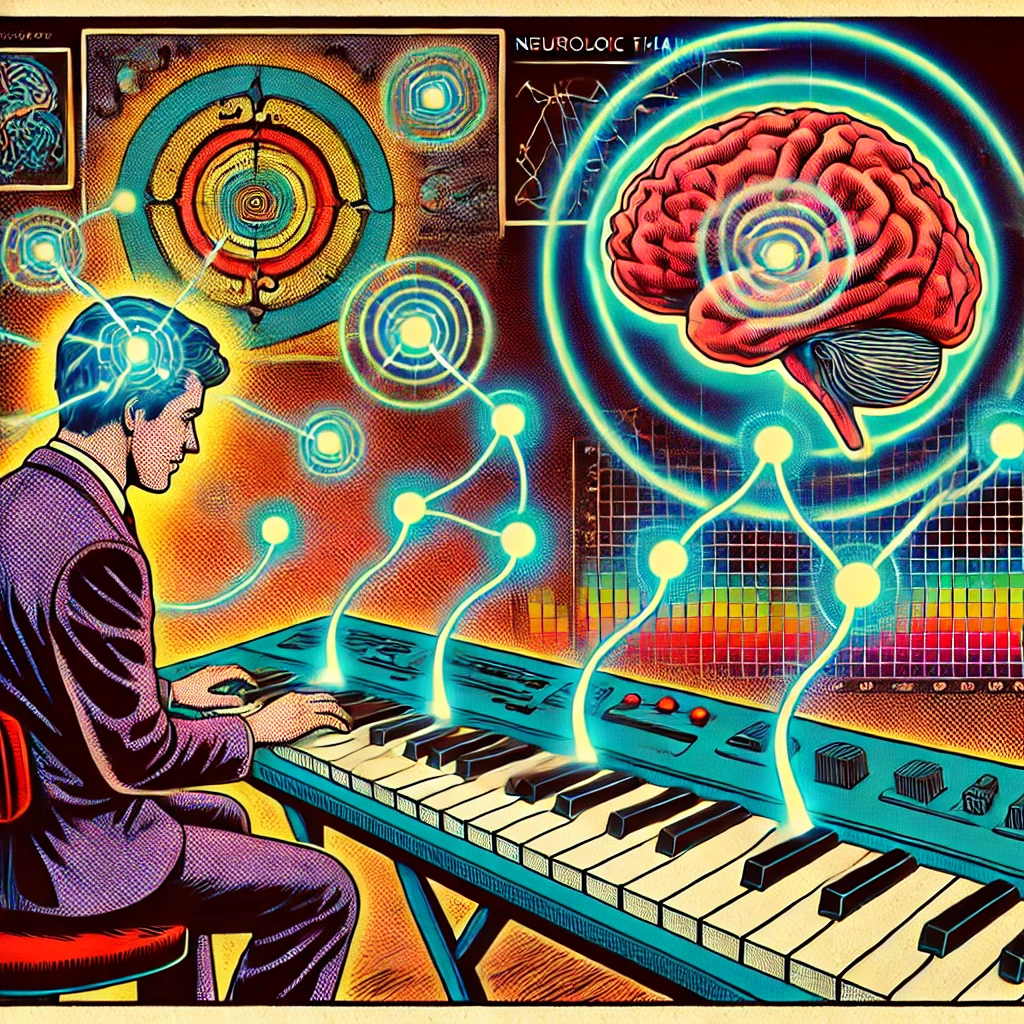Neurobiological Aspects of Neurologic Music Therapy
Abstract
“…we present data on the potential of music making to support and facilitate neurorehabilitation. We focus on interventions such as melodic intonation therapy and music-supported motor rehabilitation to showcase the effects of neurologic music therapies and discuss their underlying neural mechanisms.”
Content
Neurobiological Aspects of Neurologic Music Therapy
Eckart Altenmüller, MD, MA1ਪ*’
Gottfried Schlaug, MD, PhD2
1Institute of Music Physiology and Musicians’ Medicine (IMMM), University of Music, Drama and Media, Hanover, Germany
2Beth Israel Deaconess Medical Center and Harvard Medical School, Boston, MA, USA
Eckart Altenmüller, Institute of Music Physiology and Musicians’ Medicine (IMMM), University of Music, Drama and Media, Emmichplatz 1, D-30175 Hannover, Germany. Email: eckart.altenmueller@hmtm-hannover.de
Abstract
Making music is a powerful way of engaging multisensory and motor networks, inducing changes within these networks and linking together distant brain regions. These multimodal effects of music making together with music’s ability to tap into the emotion and reward system in the brain can be used to facilitate therapy and rehabilitation of neurological disorders. In this article, we review short- and long-term effects of listening to music and making music on functional networks and structural components of the brain. The specific influence of music on the developing brain is emphasized and possible transfer effects on emotional and cognitive processes are discussed. Furthermore, we present data on the potential of music making to support and facilitate neurorehabilitation. We focus on interventions such as melodic intonation therapy and music-supported motor rehabilitation to showcase the effects of neurologic music therapies and discuss their underlying neural mechanisms.
http://mmd.sagepub.com/content/early/2013/10/09/1943862113505328.abstract
Neurologic Music Therapy (NMT) is an evidence-based therapeutic approach that utilizes music and rhythm to address neurobiological impairments and support rehabilitation in individuals with neurological conditions. Here are some key neurobiological aspects of NMT:
1. Neuroplasticity: NMT capitalizes on the brain’s capacity for neuroplasticity, which refers to its ability to reorganize and adapt in response to injury, learning, or experience. Through targeted musical interventions, NMT aims to facilitate neural reorganization and optimize functional outcomes in individuals with neurological conditions.
2. Rhythm and Timing: Rhythm is a fundamental element of music that engages multiple brain networks involved in motor coordination, timing, and synchronization. NMT interventions often utilize rhythmic auditory stimulation (RAS) to enhance motor function, gait, and movement coordination in individuals with movement disorders such as Parkinson’s disease, stroke, or traumatic brain injury.
3. Auditory-Motor Integration: Music activates neural circuits linking auditory processing areas with motor regions of the brain, facilitating auditory-motor integration and sensorimotor synchronization. NMT interventions that involve rhythmic auditory cues can help improve movement timing, coordination, and motor planning in individuals with motor impairments.
4. Emotional Regulation: Music has a profound impact on emotional processing and regulation, engaging limbic and reward-related brain regions involved in emotion and motivation. NMT interventions harness the emotional power of music to promote relaxation, reduce stress, and enhance emotional well-being in individuals with neurological conditions.
5. Language and Communication: Music and rhythm are closely linked to language processing and communication in the brain. NMT interventions often incorporate singing, melodic intonation therapy (MIT), or rhythmic speech cues to facilitate speech production, articulation, and language comprehension in individuals with aphasia or other communication disorders.
6. Cognitive Functioning: Music engages multiple cognitive functions, including attention, memory, executive function, and spatial processing. NMT interventions that involve musical exercises, improvisation, or structured tasks can stimulate cognitive abilities and promote cognitive rehabilitation in individuals with cognitive impairments resulting from neurological conditions such as dementia, traumatic brain injury, or stroke.
7. Social Engagement: Music fosters social connection, engagement, and communication, activating brain networks involved in social cognition and interpersonal relationships. NMT interventions that involve group music-making, singing, or interactive musical activities can enhance social interaction, peer support, and quality of life in individuals with neurological conditions.
Overall, NMT capitalizes on the neurobiological mechanisms underlying music perception, processing, and production to address a wide range of motor, cognitive, language, emotional, and social impairments in individuals with neurological conditions. By targeting specific neural circuits and adaptive processes, NMT interventions aim to optimize functional outcomes and promote neurorehabilitation in clinical settings.
